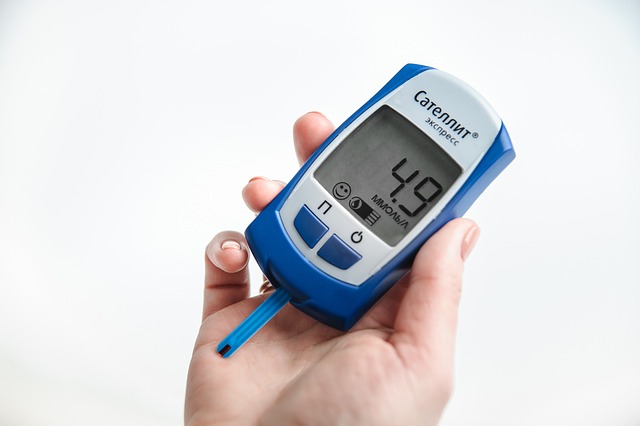The Terms You Need to Know to Understand Prediabetes and Lower Your Risk for Developing Type 2 Diabetes
It can be a lot to learn that you or someone you know has prediabetes or high blood sugar. Something else to contend with, along with a prediabetes management plan, may be the abundance of terms related to prediabetes. Knowing the basics may help you understand what it means to have prediabetes and how to best manage it to lower risk of developing type 2 diabetes.
Prediabetes
Prediabetes, also known as borderline diabetes, is a condition with higher than normal levels of blood sugar, but levels that are lower than in diabetes. It is the result of insulin resistance. It occurs in 1 in 3 adults, including in nearly half of adults who are at least 65 years old. Prediabetes rarely has symptoms, and can be diagnosed with simple blood tests.
Most cases of prediabetes are due to lifestyle factors, such as being overweight or obese or being physically inactive. Most people with prediabetes develop type 2 diabetes within years, but losing weight and making other healthy lifestyle changes are often enough to prevent or delay the onset of type 2 diabetes.
Type 2 Diabetes
Diabetes is a condition with blood sugar levels that are higher than in prediabetes. Type 2 diabetes follows prediabetes and occurs as the result of insulin resistance that has progressed, usually over the course of decades.
Diabetes management can include lifestyle changes such as losing weight, increasing physical activity, and eating a certain diet, as well as monitoring blood glucose levels one or more times a day and taking injectable insulin and/or oral medications. Without proper blood sugar management, type 2 diabetes can lead to complications such as heart disease, diabetic neuropathy, and vision problems.
Blood Sugar (Blood Glucose)
Glucose is a type of sugar, or simple carbohydrate. Some glucose is necessary in the blood to provide energy to muscles and other cells. Blood sugar, or blood glucose, comes from food you eat. When you eat, blood sugar rises due to carbohydrates in food. Between meals, glucose is released from the liver to keep blood sugar stable.
High Blood Sugar
High blood sugar is a higher concentration of glucose, or sugar, than is expected in the blood. Slightly high blood sugar indicates prediabetes, while levels higher than that indicate diabetes.
Low Blood Sugar (Hypoglycemia)
Low blood sugar, also known as hypoglycemia, can happen in people with diabetes or, occasionally, in people with prediabetes. Common causes of low blood sugar in type 2 diabetes include skipping a meal, exercising without being careful to monitor blood sugar, drinking alcohol, and eating a high-glycemic meal that causes blood sugar to spike and then crash. Mildly low blood sugar is from 54 to 70 mg/dl. It can usually be treated just by eating 15 grams at a time of fast-acting carbohydrates (such as candy, juice, or sugar), checking blood sugar, and repeating until blood sugar is normal again. Blood sugar under 54 mg/dl can lead to dizziness, confusion, and even a coma, and may need glucagon or medical intervention.
Fasting Blood Sugar (Fasting Blood Glucose)
This is the level of sugar or glucose in the blood when you have not eaten for at least 8 hours or after an overnight fast. Fasting blood sugar is 100-125 mg/dl in prediabetes. Less than that is normal, and over 125 mg/dl indicates diabetes.
Insulin
Insulin is a hormone produced by the pancreas. It helps cells in your body to properly take glucose from the bloodstream and use it properly. The levels of insulin in your blood rises after a meal, when blood sugar rises, to help lower blood sugar back to normal levels.
Insulin Resistance
Insulin resistance occurs when the body is resistant, or less sensitive, to the effects of insulin. Cells are less able to take up glucose from the bloodstream, which results in higher blood sugar and the possibility of prediabetes or type 2 diabetes.
A1C (Glycated Hemoglobin)
The A1C is an indicator of blood sugar control over the past 3 months. It is expressed in %. An A1C below 5.7% is normal, an A1C of 5.7 to 6.4% is considered prediabetes, and an A1C of 6.5% or over occurs in diabetes.
Body Mass Index (BMI)
Body mass index (BMI) is a quick way to assess weight while taking height into consideration. You can calculate your BMI by dividing your weight in kilograms by the square of your height in meters, or by using a calculator. A BMI of 18.5 to 24.9 kg/m2 is considered normal weight, overweight is 25 to 29.9 kg/m2, and 30 and over is obese.
Overweight
Overweight means having a BMI of 25 to 29.9 kg/m2. It is unclear whether being overweight itself is linked to poorer health, but being overweight is a risk factor for becoming obese and having associated health concerns.
Obese
Obese means having a BMI of 30 kg/m2 or more. Obesity is linked to health concerns such as arthritis, heart disease, stroke, hypertension, high cholesterol, and...high blood sugar. Individuals with obesity are more likely to develop prediabetes and diabetes than individuals with a normal-weight BMI, and more severe obesity is associated with greater risk.
Prediabetes Diet
Prediabetes is usually related to lifestyle factors, and improving diet can often lower blood sugar. The most important part of a prediabetes diet, if you are overweight, is that it helps with weight loss. In addition, a prediabetes diet can emphasize vegetables, whole grains, fruit, reduced-fat dairy products, healthy fats such as olive oil and nuts, and lean proteins such as fish. It limits unhealthy fats, fried foods, sugar-sweetened items, and other refined carbohydrates.
Lark can help with a prediabetes diet to lose weight and improve nutritional quality by making small changes that turn into habits and lead to long-term health benefits. Lark can help you set and track progress towards weight goals and provide in-the-moment coaching as you log what you eat and drink.
Diabetes Prevention Program (DPP)
The National DPP is a lifestyle change program sponsored by the Centers for Disease Control and Prevention (CDC). It emphasizes losing 5 to 7% of body weight and increasing physical activity to at least 150 minutes per week. These changes can lower risk for type 2 diabetes by over 50%.
Lark DPP is fully recognized by the CDC. Your Lark coach is available 24/7 through your smartphone to guide you towards a healthier lifestyle through long-lasting, feasible changes in daily habits. Each module has check-ins to help you understand prediabetes and the power you have to manage it.
Glycemic Index (GI)
The glycemic index (GI) indicates how fast and how much a carbohydrate-containing food or beverage raises blood sugar if you consume a certain-sized serving of it. High-GI foods spike blood sugar quickly, while low-GI foods allow for a slower, less dramatic increase.
High-GI foods tend to be higher in sugar and starch. Examples include white bread, jelly beans, and boiled potatoes. Low-GI foods can be higher in fiber, fat, and/or protein. Examples include beans, nuts, and bran cereal. Foods without carbohydrates, such as oil, fish, and chicken, have no GI and have a minimal impact on blood sugar.
Prediabetes And Diabetes Risk Factors
Risk factors are characteristics that raise risk for a condition. Being overweight or obese, having low physical activity levels, and smoking are all risk factors for prediabetes and diabetes. They are considered modifiable because you can change them. Older age, family history, and being Hispanic American, African American, or Native American are risk factors that are non-modifiable.











.webp)







